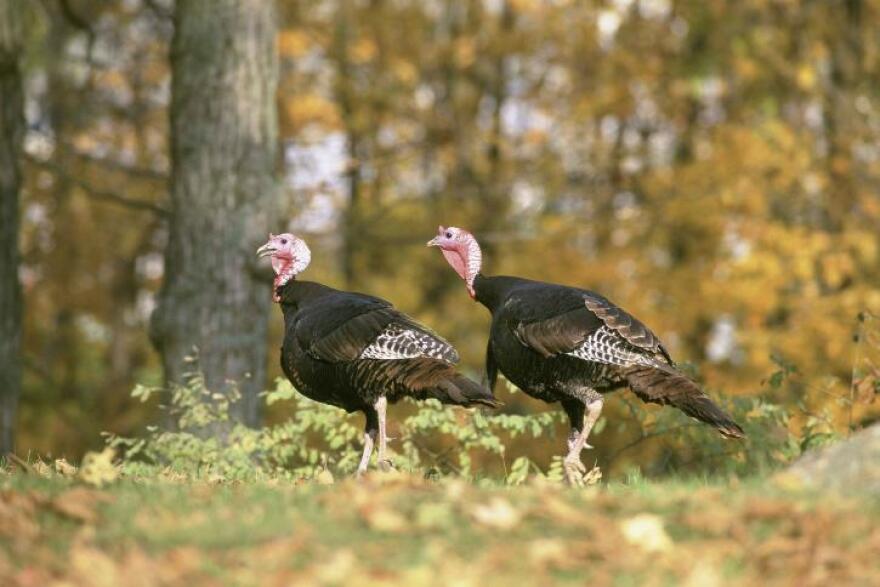In murder mysteries, the protagonist is often surprised to find a crime. A national park was the last place we expected one. Green forest trails climbed uphill from its rolling meadows. At center stage on this June day were male wild turkeys: toms.
The first ones were at our trailhead in the meadow. Puffed up, the trio alternately purred and sashayed with wings drooped and tails erected. This place, we were sure, was akin to a grouse lek, where males display vigorously to lure female attention. The observation fit only too well into a naturalist’s interpretive pigeonhole.
We stepped onto the forest trail. The shade was like a hole-in-the-wall bar. We chattered as cliquishly as if we had sidled in for a drink. We agreed that these toms illustrated the concept of sexual selection, striving for a hen’s attention. We shared a cozy “insider” sense of how nature worked.
A few curves later, a sunbeam spotlighted a dusty patch. There, a lone tom did its own ballet. We crouched to watch from the trailside rhododendron. Here was undoubtedly a winner in the game of sexual selection. Having wrested this ideal dance stage for himself, this tom would share his genes far beyond any passed-by others in the field. Eventually we sidled past him. Later, we turned around to backtrack to the trailhead.
What might we see back at the patch? A challenge by a lesser tom? A hen watching coyly from the brush? We walked eagerly only to realize - we were already there. The sun was dimmer, the patch was still. This time, no tom. At the edge of the spot, a single drop of liquid glistened moist on nettles. Crimson. Blood.
The trail began there. Furrows and divots in the dust revealed a struggle. Blood drops trailed two or three meters to spatters and then, a corpse. Wedged against a fallen log, the tom was splayed on his back. Feathers and flesh were torn. The death was recent: blood was fresh, wing- and limb joints were still supple. The killer? Our mental notebook of suspects: bear, coyote, raccoon, hawk. Our post-mortem review was inconclusive. This tom, nevertheless, had probably been on the top of his game when a predator had struck. We were as certain as two novice detectives could be.
The questions frustrated us. What had happened, though? What killed the tom? Wasn’t the lone tom in the forest safer than the others still in the exposed meadow?
Later, Alan Krakauer, a researcher in turkey behavior, flipped our reasoning upside down. The turkeys in the meadow weren’t the second tier of sexual selection. They were probably brothers defending a mutual display site which would attract more hens. The cooperation might make them safer than the lone tom from predators. Krakauer thought that cooperating brother toms were far more likely to pass shared genes to more hens than if they displayed individually. Our victim wasn’t a top tom after all. Instead, he may have been disadvantaged, lacking brothers with whom to cooperate. He was playing the edges of the sexual competition from a marginal display site. Alone, he was more - not less - susceptible to the predator that felled him.
Whodunit? We still don’t know. Our confidence was rattled a little as nature detectives. How could we have misinterpreted the clues so much? Still, the encounter had been the best sort of puzzle. It lacked pat answers. Not only were we grasping for a suspect, we were also learning that the victim wasn’t who we assumed, either. Daylight and study brought more questions than answers to this murder mystery on a dark trail.
This Field Note was written in the Field Notes writing workshop at the Montana Natural History Center. I’m Jim Greenway for Field Notes, brought to you by the Montana Natural History Center, providing natural history education for schools and the public throughout Montana. For information on upcoming events and programs at the Center, please call 327.0405 or visit our website at MontanaNaturalist.org.





